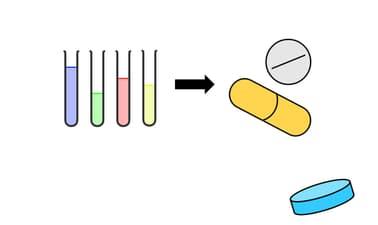MOOC List is learner-supported. When you buy through links on our site, we may earn an affiliate commission.

MOOC List is learner-supported. When you buy through links on our site, we may earn an affiliate commission.
In this course about measuring biological activity, students will learn different methods of activity measurement encountered at different stages of a drug program. The three-week course starts with an introduction to drug targets, which are biological molecules affected by drugs. The second week emphasizes biochemical, cellular, and computational methods for determining the extent to which a drug can affect the action of its target and associated signal pathways. In the final week, students will transition to in vivo studies and the interpretation of dose-response curves.
Students in the course should understand the concepts of proteins and biological pathways. Students should also be comfortable with algebraic expressions, including logarithmic functions. The course is designed in modules. Each module opens with a short video on a selected topic. The module continues with a short reading or exercise with an assessment activity. Each module will require approximately 1 hour to complete, and the course includes 15 modules. Two approaches to the course are recommended. One, a student might spend an hour per day on the course and complete all 15 modules in approximately three weeks. Two, a student with additional available time may be able to work through the entire course in just a single week or over an extended weekend.
Students signed up for the Audit Track have access to the instructional video materials. Students enrolled through the Verified Track have access to the instructional videos, the readings and activities, the assessments, as well as selected additional videos related to the primary instructional videos.
What you'll learn
- the general idea of target-based drug discovery, in which a drug’s action on a target alters the function of a biological pathway
- common types of biological molecules that serve as drug targets, especially enzymes and receptors
- different outcomes of drug-target interactions, including inhibitors, agonists, inverse agonists, and antagonists
- representative biochemical and cellular methods for measuring drug-target binding
- types of outcomes used to determine the success of clinical trials
- the generation and interpretation of dose-response curves
Syllabus
week 1
pathways, targets, and responses
mechanism of action, mode of action, and indication
types of targets and ligands
enzyme and receptor activity curves
potency vs. efficacy
week 2
types of assays
binding assays
in silico assays and screens
functional in vitro assays
comparing potency values
week 3
in vivo preclinical studies
what are biomarkers?
outcomes and surrogate endpoints
dose-response curves
using assays to discover new drugs
MOOC List is learner-supported. When you buy through links on our site, we may earn an affiliate commission.
MOOC List is learner-supported. When you buy through links on our site, we may earn an affiliate commission.
